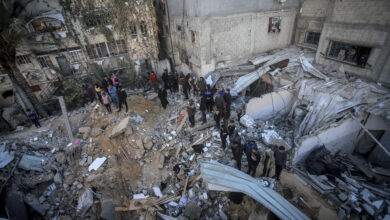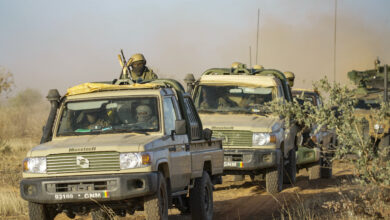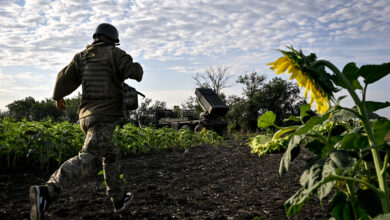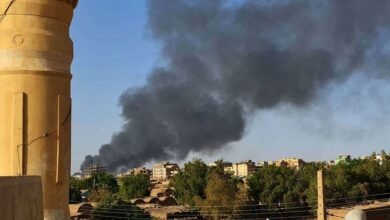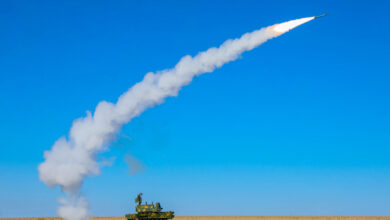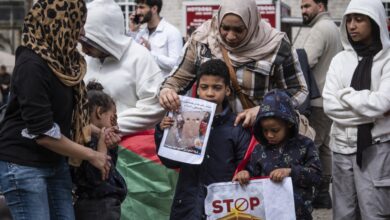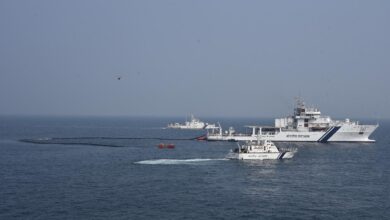Fear and mourning in Afghanistan: Hazaras mark the festival of Muharram in fragile Dasht-e-Barchi
KABUL, Afghanistan – Even for the religious festival of mourning, the Shia Hazara community in Afghanistan had to shelter behind armed guards in a part of the capital resembling a ghetto amid a string of terrorist attacks.
The Dasht-e-Barchi neighborhood in west Kabul, occupied overwhelmingly by Hazaras, was once among the few relatively peaceful and vibrant quarters of Afghan capital. But over the course of a few months, Islamic State bombers ruthlessly killed young boys and girls busy in their studies, elderly men praying, and young men wrestling in a spate of assaults here.
In conversations with The Defense Post, members of this marginalized community said they feel threatened everywhere, and avoid with heavy hearts gatherings of all sorts.
Like rest of the Muslim world, Afghan Shias marked the Mourning of Muharram, a set of rituals to mark the killing of Hussein ibn Ali, the grandson of Prophet Muhammad, for 10 days this month.
As part of the government’s desperate effort to quell more deadly assaults, the entire Dasht-e-Barchi neighborhood was turned into a huge fortress surrounded by an army of heavily armed police, not allowing free movement of people and goods.
This is in line with the Kabul government’s drastic changes in security arrangements for this district which include upgrading it to the level of a ‘green-zone,’ presumably among the safest places in the city, equal to the diplomatic zone that houses different embassies and international organizations.
On the directive of the government, the Ministry of Interior has also allowed, and in fact facilitated the arming of locals to guard their own community.
Not everyone is happy with this move. Mohammad Hussain, a Shia-Hazara writer, is one of them.
“The strategy of promoting arms and violence means back to the dark days before the arrival of the international community here. We hoped and wished to move forward towards civilization, away from arms to a free society, but all we are witnessing is a reverse movement away towards barbarism,” Hussain told The Defense Post.
Under the new security strategy, Kabul has been divided into four security zones, with special attention given to Dasht-e-Barchi.
President Ashraf Ghani came to join the Shia Hazara mourners on Thursday, September 20, to share details of the new strategy.
“Drastic changes have been made regarding the security of Kabul, especially in the west of the city [Dasht-e-Barchi], a fire department, an ambulance center and a hospital will be established in this part of the city. A new dedicated directorate has been established in the police headquarters for this part of the city,” he said, asking residents or their representatives to approach him directly.
Currently, some 500 armed civilians have taken up arms to maintain security for over 100 mosques in the city. Some are armed or regulated by the government.
Chaman Ali heads a unit in this force. He told The Defense Post that locals can ensure security in a much better way than government armed forces.
“We have successfully ensured security at the mosques, we know who is alien and outsider, and who is from among us,” he said.
Just days before the Ashura holiday, the National Directorate of Security intelligence agency announced the arrest of 26 militants associated with Islamic State-Khorasan Province who aimed to cause havoc in Kabul.
But Jawed Kohistani, a former intelligence officer, said he feared such a policy would further harm the already stained image of Afghanistan’s nascent security forces, and would lead to people not having confidence in them.
“You see, with such a move the government is shying away from its Constitutional responsibility of ensuring security of the people,” he told The Defense Post, adding that the intelligence agency should curb Hazaras from traveling to Syria for a war that has invited the wrath of the ISKP in Afghanistan.
In a distressing confirmation of longstanding rumors, Human Rights Watch last year categorically accused Iran’s Islamic Revolutionary Guards Corps of recruiting Afghan Hazara children – as young as 14 – living in Iran to fight in Syria.
The IRGC is supervising the Fatemiyoun division, an exclusively Afghan armed group, to support the Assad regime in Damascus, HRW said in a 2017 report.
In the view of the Hazara writer, Hussain, an overwhelming number of young people from this community have now reached to a tragic conclusion that escape from the country is the only way to end their suffering.
“And this means living a miserable life of fearful wait forever,” he said.



